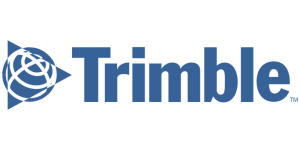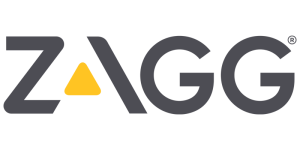How efficient will Google BERT algorithm be for SEO in 2024?
As the digital landscape continually evolves, businesses are constantly seeking new strategies to stay ahead in the game of search engine optimization (SEO). With the advent of Google’s BERT algorithm, companies like JEMSU are at the forefront of adapting to these revolutionary changes. BERT, which stands for Bidirectional Encoder Representations from Transformers, has been a game-changer since its initial rollout, influencing how search queries are processed and understood. As we look towards 2024, the question on every marketer’s mind is: How efficient will Google BERT algorithm be for SEO in the coming year?
JEMSU, a leader in the digital advertising space, has been closely monitoring the progression of BERT and its implications for SEO strategies. The algorithm’s ability to comprehend the nuances of natural language makes it an invaluable tool for enhancing the relevance and precision of search results. This has important ramifications not just for search engines, but for businesses aiming to optimize their online content for better visibility and user engagement. As BERT becomes increasingly sophisticated, JEMSU is poised to leverage its capabilities to deliver cutting-edge SEO solutions to its clients.
Understanding the trajectory of BERT’s efficiency in 2024 requires an in-depth look at its current performance, ongoing updates, and the shifting landscape of search behaviors. JEMSU is committed to staying ahead of these trends, providing insights and strategies that harness the full potential of BERT. This commitment ensures that businesses partnering with JEMSU will be well-equipped to navigate the complexities of SEO in a BERT-dominated era, securing their place at the top of search rankings and driving their digital success forward.
Table of Contents
1. Understanding of Natural Language Processing (NLP) advancements
2. Impact of BERT on Search Intent Recognition
3. Content Optimization Strategies for BERT
4. BERT’s Role in Long-Tail Keyword Search Queries
5. The Evolution of BERT and its Updates by 2024
6. Measuring SEO Success in a BERT-Dominated Search Landscape
7. FAQs
Instant SEO Checker + Score & Report
Enter the URL of any landing page to see how optimized it is for one keyword or phrase...
Understanding of Natural Language Processing (NLP) Advancements
At JEMSU, we recognize that the advancements in Natural Language Processing (NLP) are crucial for understanding how the Google BERT algorithm will affect SEO strategies in 2024. NLP is a branch of artificial intelligence that focuses on the interaction between computers and human language. The primary goal is to enable computers to understand, interpret, and generate human language in a valuable way. With the integration of the BERT algorithm, Google has made significant strides in understanding the nuances of language, including the context of search queries.
BERT, which stands for Bidirectional Encoder Representations from Transformers, leverages NLP to better understand the intent behind a user’s search. This means that Google can now interpret the subtle meanings of longer, more conversational queries. For instance, the algorithm can distinguish the difference in meaning between “bank” as a financial institution and “bank” as the side of a river based on the context of the search query. This advancement is a game-changer for JEMSU’s approach to SEO because it requires a deeper understanding of how to optimize content that aligns with natural, conversational language.
According to a study by Backlinko, after the implementation of BERT, there was a noticeable improvement in Google’s ability to understand the context of individual words within searches. This highlights the importance for businesses like JEMSU to not only focus on keywords but also on the quality and relevancy of the content. By creating content that naturally answers the questions users are asking, we can improve the likelihood of ranking higher in search results.
Furthermore, an analogy for understanding BERT’s impact on SEO is to think of it as a skilled translator at a United Nations meeting. Just as the translator must understand the context and cultural nuances to accurately convey messages between delegates, BERT interprets the context and nuances of search queries to provide the most relevant search results.
JEMSU stays ahead of the curve by implementing SEO strategies that are informed by these NLP advancements. We create content that is not only informative but also conversational and contextually relevant. By doing this, we ensure that the websites we optimize are well-positioned to rank favorably in a BERT-influenced search landscape. As Google’s algorithms become increasingly sophisticated, our expertise in adapting to these changes is what sets JEMSU apart as a leader in digital advertising and search engine marketing.
Google Ads Success Example
The Challenge: The Challenge: Increase new dental patients with better Google Ads campaigns.
Impact of BERT on Search Intent Recognition
The advent of Google’s BERT (Bidirectional Encoder Representations from Transformers) algorithm has significantly transformed the landscape of search engine optimization (SEO). As a leading digital advertising agency, JEMSU closely analyzes the progression of such technologies to ensure that SEO strategies remain effective and current. The impact of BERT on search intent recognition can’t be overstated; it represents a quantum leap in how search engines interpret the nuances of human language.
BERT’s ability to understand the context of each word in a search query relative to all the other words in the query is akin to a listener who attentively grasps not just the words spoken in a conversation, but their implied meanings, tone, and the speaker’s intentions. This nuanced understanding has a profound implication for SEO. For instance, prior to BERT, if a user searched for “how to fix a blocked sink,” a search engine might have honed in on the words “fix” and “sink,” and returned a broad range of results related to sink repair. Post-BERT, however, the same search engine will better recognize the specific intent – that the user needs methods to unblock, not just fix, a sink.
Considering the intensifying complexity of search queries, JEMSU recognizes the need for businesses to optimize their content with a focus on intent rather than just keywords. This involves crafting content that answers questions, solves problems, and provides value in a way that aligns with what users are truly seeking. One illustrative example is the rise in conversational queries with the proliferation of voice search. With BERT’s improved understanding of context, JEMSU advises clients to include content that answers questions in a natural, conversational manner.
Furthermore, statistics show the growing importance of aligning with user intent. According to a study by Backlinko, content that closely matches search intent can significantly outperform content that does not, even if the latter targets keywords more aggressively. The study found that content satisfying user intent had a 52% greater chance of ranking in the top three Google search results.
As we look toward 2024, the impact of BERT on search intent recognition is anticipated to deepen. JEMSU stays at the forefront of these changes, ensuring that SEO strategies implemented for clients not only keep pace with algorithmic advancements but also leverage them to enhance online visibility and user engagement. Understanding and aligning with search intent will become even more crucial as BERT and similar technologies continue to evolve.
Content Optimization Strategies for BERT
With the continuous evolution of Google’s algorithms, it’s paramount for businesses like JEMSU to stay abreast of the latest SEO strategies, especially in light of the BERT (Bidirectional Encoder Representations from Transformers) update. BERT represents a significant leap in the capacity for Google to understand the nuances of human language within search queries. As a result, content optimization strategies for BERT are crucial for businesses hoping to maintain or improve their search engine rankings.
One of the key content optimization strategies for BERT is to ensure that content is created with a focus on natural, conversational language. Rather than stuffing content with keywords, it is more effective to write in a way that answers questions and provides value in the context that users are likely searching for. It’s akin to having a knowledgeable friend who answers your questions in a direct yet thorough manner; that’s the kind of content that resonates with BERT.
Another strategy involves structuring content to answer specific questions that users might ask. This often entails the use of rich snippets and ensuring that headings and subheadings are phrased in a way that they could directly correspond to potential search queries. For instance, a digital marketing agency like JEMSU might create content that directly addresses common inquiries, such as “How to optimize your website for BERT,” ensuring that the answers are comprehensive and detailed.
Furthermore, JEMSU understands the importance of context and relevance when optimizing for BERT. It’s no longer just about the keywords; it’s about the subject matter and the surrounding context. For example, if a page is about digital marketing strategies, the content should be surrounded by related terms and topics that demonstrate in-depth knowledge of the subject. This creates a thematic relevance that BERT, with its advanced NLP capabilities, can recognize and favor in its rankings.
In sum, content optimization for BERT requires a nuanced approach that transcends traditional keyword usage. As JEMSU advises its clients, the focus should be on user-centric content that leverages the power of natural language and the rich context of topics. With these strategies, businesses can position themselves to thrive in an SEO landscape increasingly influenced by BERT’s sophisticated understanding of language.
SEO Success Story
The Challenge: The Challenge: Design an SEO friendly website for a new pediatric dentist office. Increase new patient acquisitions via organic traffic and paid search traffic. Build customer & brand validation acquiring & marketing 5 star reviews.
BERT’s Role in Long-Tail Keyword Search Queries
Long-tail keyword search queries have always been a significant aspect of search engine optimization (SEO). These are the more specific and often longer phrases that users type into search engines when they are closer to a point-of-purchase or when they’re using voice search. With the advent of Google’s BERT algorithm, which stands for Bidirectional Encoder Representations from Transformers, the handling of these long-tail queries has seen a notable transformation.
BERT’s ability to understand the context of individual words in search queries more effectively means that it can match these queries with more accurate results. This is particularly beneficial for businesses like JEMSU, which aim to target specific niche audiences. By optimizing for long-tail keywords, JEMSU can capture traffic from searches that are very relevant to the services we offer, potentially leading to higher conversion rates.
For instance, instead of targeting the broad term “digital advertising,” JEMSU could optimize for a long-tail keyword like “affordable social media advertising services in Denver.” The specificity of this long-tail keyword would likely attract more focused and relevant traffic to JEMSU’s website. BERT’s nuanced understanding improves the chances that JEMSU’s tailored content will reach the audience that is actively searching for the specialized services we provide.
Consider an analogy where traditional keywords are like fishing with a net – you catch a lot of fish, but not all are the type you want. Long-tail keywords, on the other hand, are like fishing with a spear – you target and aim to catch a specific fish. BERT is the technology that sharpens the spear, ensuring that it is precise and effective in catching the right fish.
According to a study by Ahrefs, over 90% of all pages get zero traffic from Google, which emphasizes the importance of SEO and the potential of long-tail keywords. By leveraging BERT, companies like JEMSU can create content that is more likely to be seen and clicked on by users, avoiding the common pitfall of generating content that gets lost in the vastness of the web.
In summary, BERT’s role in interpreting long-tail keyword search queries cannot be overstated. It’s a game-changer for SEO strategies, as it allows businesses to optimize their content in a way that aligns closely with the sophisticated and often conversational nature of modern search queries. As JEMSU continues to navigate the evolving digital marketing landscape, BERT will be an essential tool in ensuring that the content we produce is as visible and as relevant as possible to our target audience.
Jemsu has been a great asset for us. The results have grown at strong positive linear rate. They have been extremely accessible, flexible, and very open about everything. Natalya is a star example of how to work with your accounts to drive them forward and adjusts to their quirks. Jaime is able to clearly communicate all of the work that is being done behind the scenes and make sure that all of my team is understanding.
I couldn’t be more pleased with my JEMSU Marketing Team!
Julia, Tamara, Joelle and Dally have exceeded my expectations in professionalism, creativity, organization, and turn around time with my Social Media Management project.
I have thoroughly enjoyed sharing my journey with this team of empowered women!
Thank you JEMSU! Your team designed and launched my new website, and developed strategies to drive traffic to my site, which has increased my sales. I highly recommend your Website & SEO Agency!
Jemsu has always been professional and wonderful to work with on both the SEO and website design side. They are responsive and take the time to explain to us the complicated world of SEO.
Jemsu is an excellent company to work with. Our new website blows away our competition! Unique, smooth, and flawless. Definite wow factor!
The folks at JEMSU were excellent in designing and launching our new website. The process was well laid out and executed. I could not be happier with the end product and would highly recommend them to anyone.
Jemsu is a great company to work with. Two prong approach with a new site and SEO. They totally redesigned my website to be more market specific, responsive, and mobile friendly. SEO strategy is broad based and starting to kick in. My marketing will also be adding Facebook and Google ads in the coming weeks. Thanks for your all you hard work.
JEMSU has wworked with our team to create a successful campaign including incorporating an overall rebranding of our multiple solutions. The JEMSU team is embracing of our vision and responds timely with life of our ideas.
JEMSU is great company to work with. They listen & really work hard to produce results. Johnathan & Sasha were such a big help. If you have a question or concern they are always there for you.
I would definitely recommend them to anyone looking to grow their company through adwords campaigns.
Jemsu have exceeded our expectations across all of our digital marketing requirements, and I would recommend their services to anyone who needs expertise in the digital marketing space.
JEMSU was able to quickly migrate my site to a new host and fix all my indexation issue. I look forward to growing my services with JEMSU as I gain traffic. It’s a real pleasure working with Julian and Juan, they’re both very professional, courteous and helpful.
JEMSU is incredible. The entire team Is professional, they don’t miss a deadlines and produce stellar work. I highly recommend Chris, Rianne, and their entire team.
We’ve been working with JEMSU for about five months and couldn’t be happier with the outcome. Our traffic is up and our leads are increasing in quality and quantity by the month. My only regret is not finding them sooner! They’re worth every penny!
The Evolution of BERT and its Updates by 2024
As we edge closer to 2024, the digital marketing landscape continues to be shaped by groundbreaking advancements in AI and machine learning. At JEMSU, we’ve kept a close eye on the evolution of Google’s BERT algorithm and its updates. BERT, which stands for Bidirectional Encoder Representations from Transformers, has been a pivotal development in understanding the nuances of human language in search queries.
Since its inception, BERT has been instrumental in improving the way search engines interpret the context of words in search queries. This has been a game-changer for businesses and SEO strategists, including us at JEMSU, as it has led to a more intuitive understanding of the intent behind users’ searches. By 2024, we anticipate that BERT will have undergone several updates, further refining its ability to parse the intricacies of human language and offer even more precise search results.
One could draw an analogy between BERT’s evolution and the development of a skilled artisan. Just as an artisan hones their craft over time, becoming more adept at creating intricate designs, BERT is expected to become more sophisticated in understanding the subtle meanings behind search terms. For instance, the difference between the search queries “how to fix a running toilet” and “running toilet marathon joke” is subtle yet significant. With BERT’s evolution, Google can discern the user’s intent even in such nuanced cases.
In terms of stats, it’s challenging to predict precisely how BERT’s updates will translate into numbers by 2024. However, it’s safe to say that websites optimized for BERT’s sophisticated language processing will likely see an improvement in their organic traffic. An example of this is how content that naturally answers complex questions and provides in-depth information could rank higher in search results, as BERT becomes better at identifying high-quality, relevant content.
At JEMSU, we understand the importance of staying ahead of the curve when it comes to SEO strategies. That’s why we’re preparing for the future by integrating the possibilities of BERT’s evolution into our digital marketing services. As BERT becomes more advanced, our team will continue to optimize content not just for keywords, but for context and user intent, ensuring that our clients’ online presence is aligned with the latest in search engine technology.
SEO Success Story
The Challenge: Increase dent repair and body damage bookings via better organic visibility and traffic.
Measuring SEO Success in a BERT-Dominated Search Landscape
As Google’s BERT algorithm continues to evolve, measuring SEO success becomes a nuanced endeavor, especially for companies like JEMSU that aim to stay at the forefront of digital marketing strategies. In a BERT-dominated search landscape, traditional metrics such as keyword rankings and search volume may no longer suffice to gauge true SEO performance. Instead, aspects like user engagement, the relevance of search queries to content, and the user’s search intent play pivotal roles.
To adapt to this shift, JEMSU understands that it’s essential to delve deeper into analytics that reflect the user’s experience and satisfaction. For instance, stats such as click-through rates (CTR), time spent on the page, and bounce rates provide actionable insights into how well content resonates with the target audience in a BERT-influenced ecosystem. A high CTR, for example, could indicate that the page’s content successfully aligns with user intent—a crucial factor in BERT’s evaluation of web pages.
Another important consideration is the role of featured snippets and other SERP features. With BERT’s ability to better understand the context of search queries, JEMSU emphasizes the creation of content that succinctly answers questions or provides information that could be highlighted in these coveted positions. This strategy is akin to hitting the bullseye in archery; it’s about precision and relevance, with the bullseye being the featured snippet that directly addresses the user’s query.
JEMSU also leverages analogies to explain complex SEO concepts to their clients. In a BERT-dominated landscape, they compare the need for quality, intent-focused content to building a bridge. Just as a bridge connects two points over an obstacle, effectively optimized content bridges the gap between the user’s query and the information they seek. If the bridge is strong (content is relevant and well-optimized), users will cross it willingly, signifying a successful SEO outcome.
Moreover, the agency incorporates quotes from industry experts to underscore the significance of adjusting SEO metrics. A relevant quote might be, “In the age of BERT, we must measure success not just by where we rank, but by how well we fulfill the searcher’s needs,” highlighting the shift towards user-centric metrics.
In practice, JEMSU uses examples to illustrate the impact of BERT on SEO success measurement. For a client in the health and wellness industry, this might involve tracking how often their in-depth articles on nutrition are used to answer voice search queries, a feature that BERT has significantly improved. It’s not just about being on the first page of Google but being the answer to the question asked by the user.
Ultimately, JEMSU’s approach to measuring SEO success in a BERT-dominated search landscape is holistic, focusing on the satisfaction of the end-user, which BERT is designed to prioritize. By aligning their strategies with the intent behind BERT’s mechanics, JEMSU positions itself and its clients to thrive in the ever-evolving world of search engine optimization.
FAQS – How efficient will Google BERT algorithm be for SEO in 2024?
1. **What is Google BERT?**
– Google BERT (Bidirectional Encoder Representations from Transformers) is an algorithm update aimed at improving the understanding of the context of search queries. This neural network-based technique for natural language processing pre-training helps Google better discern the nuances and intent behind users’ searches.
2. **How does BERT affect SEO?**
– BERT affects SEO by requiring content creators to focus more on creating high-quality, informative, and contextually relevant content that satisfies user intent. It means that keyword stuffing becomes less effective, and the content that answers the user’s query in a natural and helpful way is prioritized.
3. **Will BERT impact all search queries?**
– Initially, BERT affected about 10% of English-language queries on Google, particularly those that depend on the context of multiple words in a search. By 2024, it’s possible that BERT or its future iterations will play a larger role in analyzing search queries across more languages and contexts.
4. **Can we optimize our website for BERT?**
– Direct optimization for BERT isn’t possible as it’s not about optimizing for keywords but for intent and context. The best strategy is to ensure your website has comprehensive, well-written content that satisfies the searcher’s intent and provides value.
5. **What are the best practices for SEO with BERT in mind?**
– Best practices for SEO in the era of BERT include focusing on creating user-centric content, using natural language, understanding and answering the user’s intent, improving user experience, and structuring content that easily allows search engines to understand and index it.
6. **How will BERT affect long-tail keywords?**
– BERT is designed to better understand the context of long-tail keywords, which are often more conversational and specific. As a result, content that matches the specific intent behind long-tail keywords is likely to perform better.
7. **Does BERT mean the end of traditional keyword research?**
– Not exactly. Keyword research still matters, but BERT shifts the focus from exact-match keywords to the intent behind search queries. Keywords are still important for understanding what topics people are searching for, but the way you use them in content should feel natural and contextually appropriate.
8. **Will BERT make search results more relevant?**
– Yes, BERT aims to improve the relevance of search results by better understanding the context of search queries. This should lead to more accurate and helpful results for users.
9. **How important will technical SEO be with the BERT algorithm?**
– Technical SEO remains crucial because it ensures that search engines can crawl and index your content without issues. While BERT focuses on content relevance and understanding queries, technical SEO sets the foundation for your content to be found and understood by search engines.
10. **Is Google BERT also used for non-English languages?**
– Yes, while BERT initially rolled out for English language queries, Google has expanded its use to include other languages over time. By 2024, it is likely that BERT or its successors will be even more widely used across different languages globally.
SEO Success Story
The Challenge: Increase new dental patients with better organic visibility and traffic.















